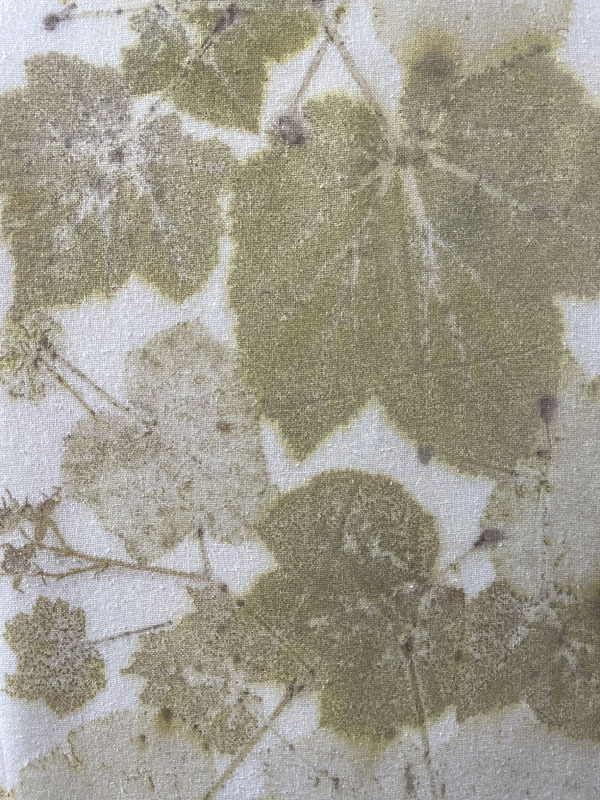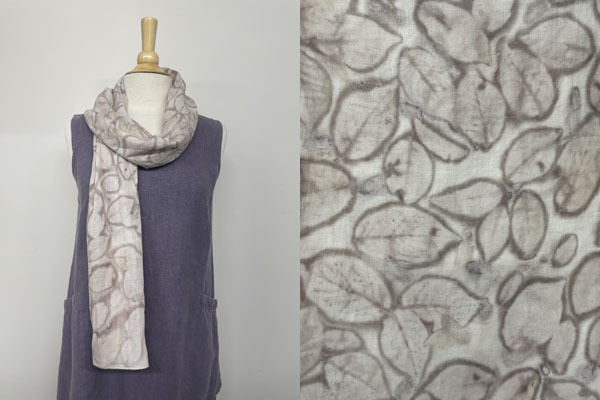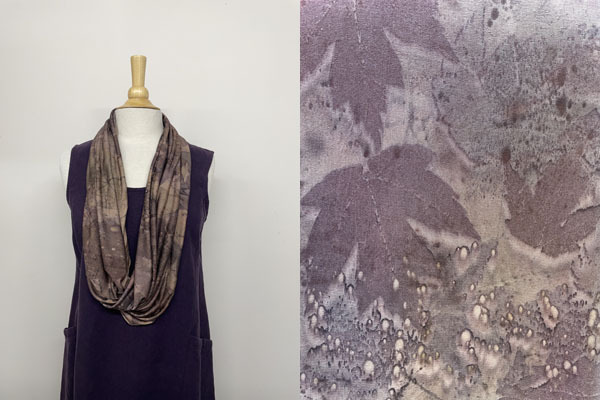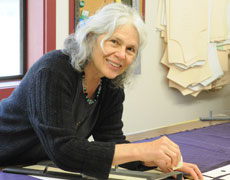Embrace Autumn with Unique Ecoprinted Scarves
Posted by Rose on 29th Oct 2025
Discover the beauty of nature-inspired designs in our Ecoprints Collection
Ecoprinting is a natural dyeing technique that transfers the shapes and patterns of real leaves and flowers directly onto fabric, creating one-of-a-kind botanical prints. (Eco refers to the word ecological, and printing is the process.) Each ecoprinted scarf I make is an experiment in color, texture, and time, revealing the diverse beauty of the natural world.
Autumn has arrived early this year in my part of the world. Cool nights and rainy days mean I have already pulled out my layers and scarves to stay warm both indoors and out. All that layering has me thinking about how much autumn influences my work, too.
Detail of Thimbleberry Silk Crepe Scarf
The best time for ecoprinting
In my estimation, autumn is the best season for ecoprinting. By this time of year, the leaves have lost much of their chlorophyll and have accumulated high concentrations of tannins, which play a big role in how the colors appear and stay on the fabric. The leaves are almost ready to fall off the trees anyway, so it feels like an ethical time to collect them too.
What are tannins?
Tannins are natural compounds found in many plants and are a key ingredient in both natural dyeing and ecoprinting. They help the color bond to the fiber, add their own tones, and make the prints more colorfast so they do not fade over time.
How tannins shape natural color
You can think of tannins as a kind of bridge, helping the pigments grip the fabric instead of washing away. Depending on the leaf, they can introduce their own hues too, from soft greys and browns to golden yellows. The top sides of the leaves produce different outlines from the undersides. Even something as seemingly small as how a leaf rests on the fabric can change the outcome.
Each leaf species, fabric type, and mordant interacts differently. Even the time of year affects how much tannin is present, which means every ecoprint is unique. While it’s true that the more you experiment with these variables, the better your understanding of how they shape the final color and pattern, there’s almost always an element of surprise.
Here’s a scarf I dyed on ramie fabric using the leaves of a volunteer cherry-plum tree in our backyard. The bright red leaves contain a more greyish-brown tannin that leaves a cool effect.
How did the infinity scarf take shape?
I first dyed this silk with madder to achieve a warm base tone, then layered on mostly maple leaves for the print. The more defined parts of the maple leaves were from the bottom of the leaves, but the bubbly-looking portions were made with the top of the leaves and ends of the stems.
Appreciating nature's patterns in ecoprints
Whether you are a fellow maker or simply love the look of naturally dyed textiles, I hope you have enjoyed this small glimpse into my process. If you’re looking for something truly unique to wear or gift this season, my ecoprint scarves are each made by hand, and no two are ever identical. Explore the entire scarf collection here.
Enjoy your autumn (if it is autumn where you live), whatever the weather and whatever you are creating in your life.
Share:





